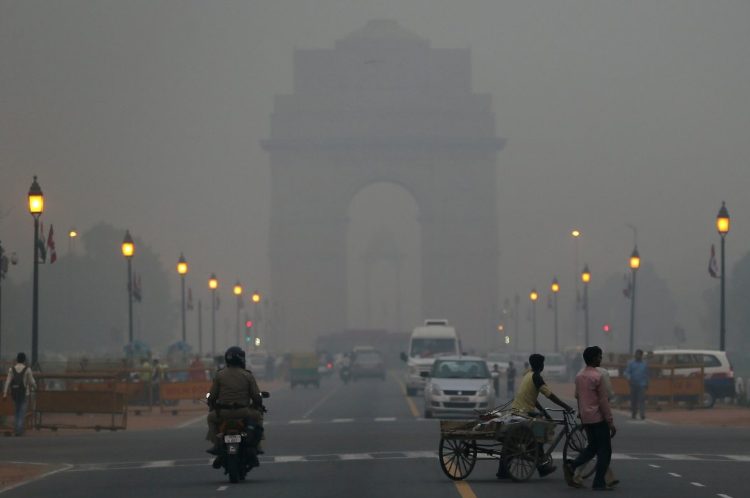As the seat of India’s Parliament, Delhi occupies a unique place at the intersection of governance, public welfare, and policy innovation. Successive administrations have tried to improve the quality of urban life, with varying degrees of success. But Delhi still offers ample room for transformative reform. A few targeted initiatives can recast the capital — not just for its residents, but as a model of inclusive urban governance.
One such initiative is the Delhi government’s new policy for the phased rehabilitation of street dogs. It seeks to address the long-standing tension between public safety and animal welfare by shifting stray dogs into institutional shelters where they can receive medical care, attention, and possibly, adoption. Humane in spirit and necessary in practice, the policy acknowledges that progress is measured not just in infrastructure but also in empathy and coexistence. If executed well, it could become a national template for handling one of India’s most visible urban challenges.
Still, this is just one step forward. Delhi must confront a host of other pressing concerns—ranging from emergency healthcare access to air quality and inclusivity—that affect daily life in more immediate and universal ways.
READ I TCS layoffs: AI threatens to disrupt India’s tech dream
Technology as a lifeline
In an age when groceries arrive in ten minutes, the failure to ensure equally swift medical assistance during emergencies is both ironic and unacceptable. During the COVID-19 pandemic, the city’s ambulance infrastructure was overwhelmed—patients died waiting for help that never arrived.
Delhi urgently needs an app-based, real-time first-response system for doorstep medical assistance. The idea is simple but timely: create a service that allows citizens to summon first-aid support with a few taps on a phone. While public ambulances exist, they are often delayed by traffic or limited resources.
This is an ideal space for a public-private partnership. Delivery platforms with proven last-mile efficiency could be incentivised to offer first-aid services, especially to vulnerable groups such as the elderly, children, or accident victims. With modest subsidies or enabling regulations, the government can seed a parallel health infrastructure that would deliver reassurance along with relief.
From oxygen bars to structural solutions
Delhi’s air pollution is no longer a seasonal affliction—it is a year-round, slow-burning health crisis. By January 10, 2025, the city had already breached the World Health Organisation’s annual limit for PM2.5. By June, it had surpassed India’s own National Ambient Air Quality Standards.
The average PM2.5 concentration for the first half of 2025 stood at 87 micrograms per cubic metre—17 times higher than the WHO-prescribed safe level of 5 µg/m³. These are not abstract numbers; they translate into respiratory illnesses, reduced productivity, and premature deaths.
While long-term reforms—such as curbing vehicle emissions and tackling stubble burning—are essential, the city can also look at immediate, unconventional interventions. One such option is the establishment of medically supervised oxygen bars, similar to those seen in cities like Paris. These offer short-term relief by allowing people to inhale purified, scented oxygen, and could be deployed in congested public spaces like Connaught Place, metro stations, and parks.
Though not a substitute for structural change, such measures can offer respite, especially to high-risk groups such as pregnant women, the elderly, and those with respiratory ailments. That said, technology and quick fixes alone will not suffice. Reducing pollution at its source remains non-negotiable.
Designing for sensory inclusion
Urban inclusivity in India is still largely defined by ramps and braille signage. But accessibility must extend to those with sensory sensitivities—people with autism, ADHD, PTSD, or visual and auditory impairments.
Delhi can pioneer the concept of Sensory-Inclusive Zones in crowded areas such as markets, parks, museums, and metro stations. These would offer quiet spaces with dim lighting, soft furnishings, and sensory kits like noise-cancelling headphones or fidget tools. Such environments provide crucial refuge from overstimulation.
The city should also experiment with “sensory-friendly hours” in public venues—cinemas, museums, and cultural events—where lighting and sound are toned down to create a welcoming atmosphere for neurodiverse individuals.
Building this layer of empathy into urban design would position Delhi as a “Purple City”—a metaphor for universal accessibility that complements the “smart city” agenda with a commitment to inclusion.
Leading by design, not default
As India’s capital, Delhi has both the opportunity and responsibility to lead by example. Whether through tech-enabled first-aid services, imaginative responses to pollution, or sensory-inclusive urban design, the goal must be to create a city where innovation serves empathy and efficiency meets equity.
The recent street dog rehabilitation policy is a good beginning, but it must be followed by bolder, cross-sectoral interventions. Governance is not merely about rules and roads—it is also about recognising the daily vulnerabilities of citizens and designing for their dignity. In a country of growing urban aspirations, Delhi can—and must—show the way.
Dr Megha Jain is Assistant Professor, Shyam Lal College, University of Delhi. Vanyaa Gupta is an independent Economist based in Delhi. Dr Badri Narayanan Gopalakrishnan is a fellow at NITI Aayog.

